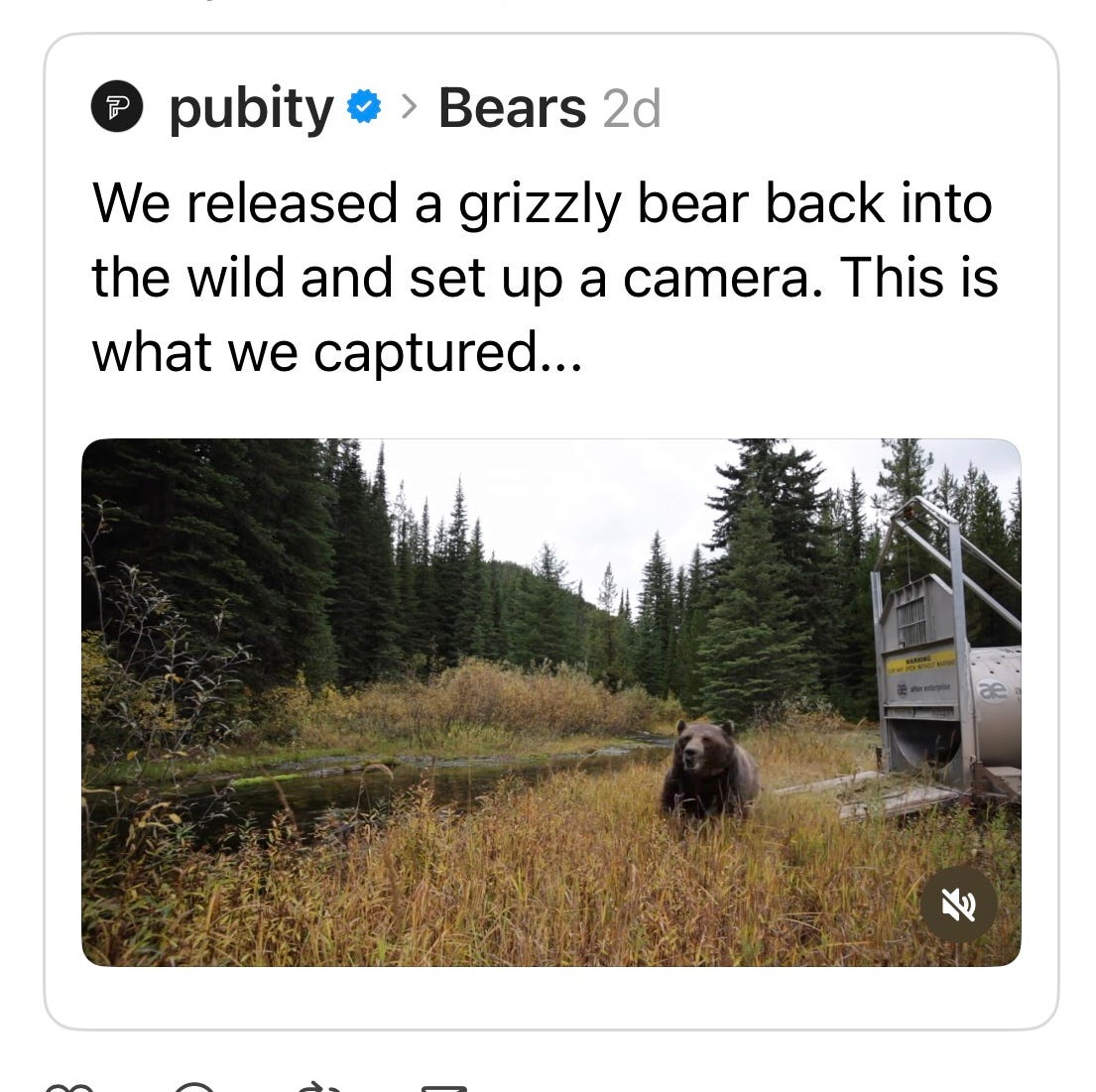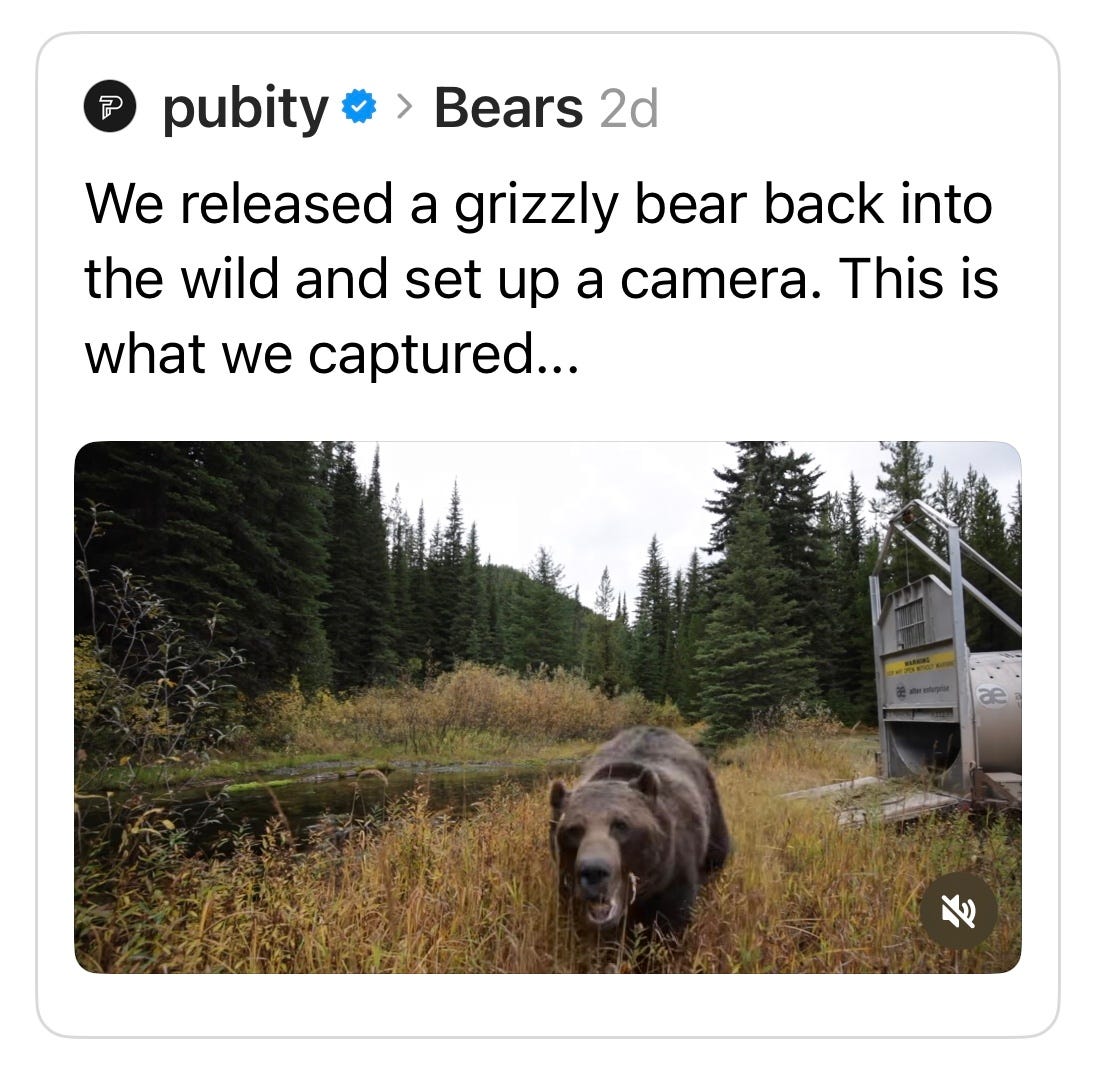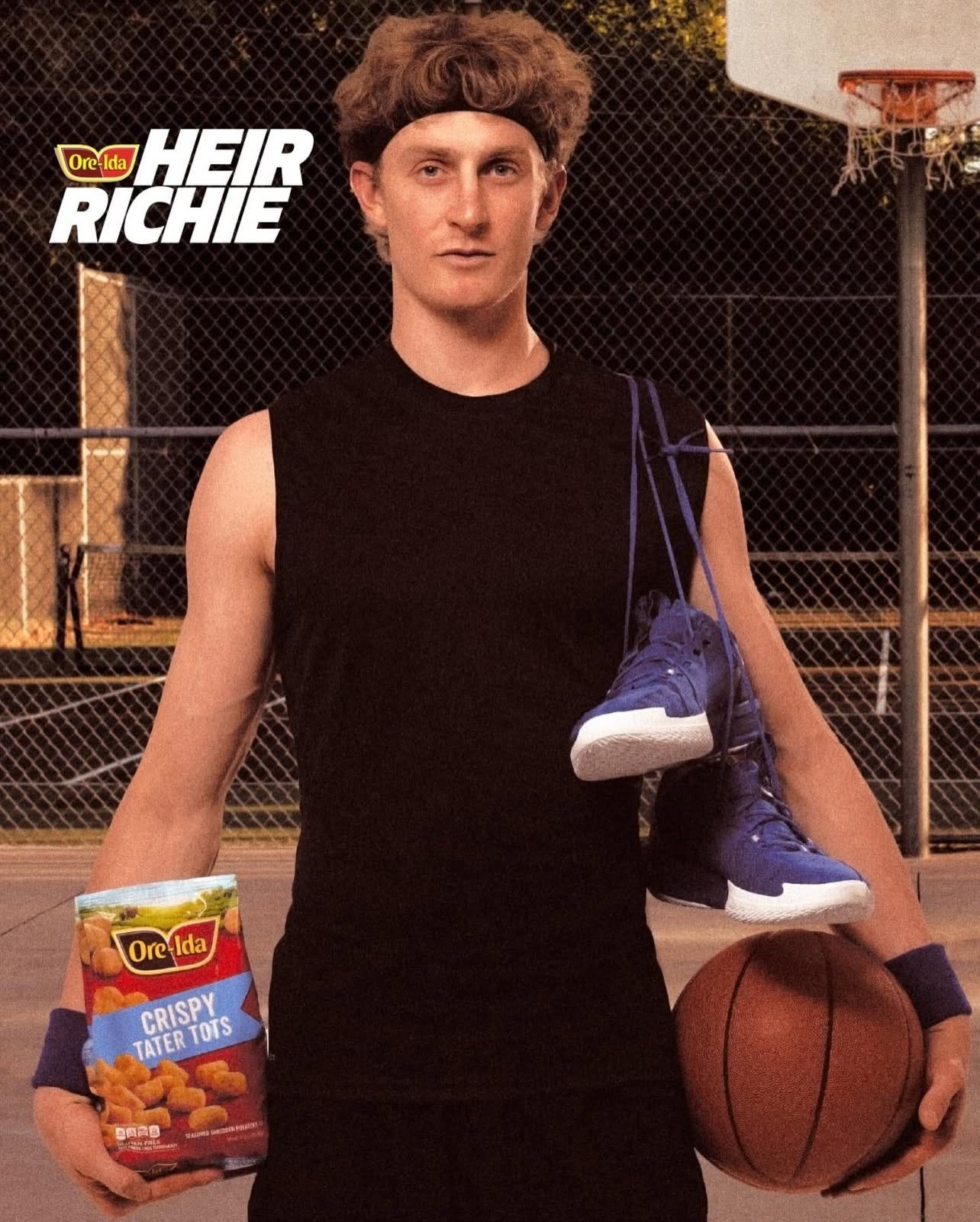Grizzlies
The Utah Grizzlies of the ECHL have been here for 20+ years, but rumors of extinction since the NHL’s Utah Hockey Club arrival persist. A recent front office move might have offered hope.
Inside the Maverik Center in West Valley City, the Utah Grizzlies are now the red-headed stepchild of professional hockey here.
» A short 10-minute car ride on two freeways south of the Delta Center and the NHL’s new Utah Hockey Club, the Grizzlies are probably aware they don’t fit in as well as they used to and yet are drawing decent crowds at home in this their 20th season in Utah.
That said, no one knows how long the Grizzlies will continue operations here, but: when I passed the Maverik Center on a Sunday afternoon in early March, the parking lots around it was two-thirds full for a game against the Tulsa Oilers. (It drew about 6,500—more than half the arena capacity.)
All told, the Grizzlies have averaged 4,860 fans per game according to the latest statistics from HockeyDB, a database that tracks attendance figures for all of North America’s professional hockey leagues. That number, by the way, is down 1,200 fans from last year.
Conversely, grizzlies have been in parts of the Mountain Time Zone for centuries — though they haven’t been seen in Utah for over a century. Like many things in life, that could change once global warming moves these bears further south in search of food and adequate shelter. Here are some photos of one grizzly who was let back into the wild:
Aww…he wants to play with the camera…
Alright, he most certainly does NOT!
Ahem: as of 2023, grizzlies were seen pushing into portions of Southern Idaho from the Montana mountains.
» Affiliates of the Colorado Avalanche of the NHL, the Grizzlies hockey team does its own thing here. Like the grizzly I featured who was a tad anti-social, the hockey variety aren’t members of any of the Utah Hockey Club’s many fan groups nor participate in activities with the expansion franchise—nor feed any of their players to Utah’s new NHL team.
There are reasons for it that I’ll get into later, but: it has to be irritating for one pro franchise to operate in the same valley as one of its NHL rivals. To be certain, Utah’s capital city isn’t New York, Chicago, Los Angeles or even Seattle; sure, the metropolitan area here is growing by the year, and is projected to reach three million by 2030, and yet packing the Maverik Center—even when the Utah Hockey Club isn’t playing a home game the same day—seems to be a tall task.
At present, the Grizzlies are only one of two ECHL franchises in their area to also have a NHL team. In that sense, it’s rather remarkable for them to be able to draw upwards of 5,000 fans per game when the Delta Center is often at capacity for Utah Hockey Club games. The Grizzlies are 12th in the ECHL in attendance, in the upper half in their league.
» Meanwhile, the Tucson Roadrunners play in the AHL and yet serve as Utah’s current development team, a city in a state that has now, barring some miracle, lost its NHL franchise in Phoenix, 60 miles northwest, for many years to come. The Roadrunners average 4,000 fans per home game, ranking them near the bottom of the AHL in attendance.
Everyone is aware of how Ryan Smith and his tech bro billions bought the then-Arizona Coyotes of the NHL for a record fee and immediately moved the team to Utah where it currently plays as the Utah Hockey Club.
In turn, the Meruelo family that owned the Coyotes backed out of a land/arena proposal in the North Phoenix/Scottsdale area, and by rote gave up rights for a NHL team in the city within the five years the league had allotted.
» Like their lot in this state, the Utah Grizzlies sit in second-to-last place in the ECHL. Unlike Tucson that has over a half-dozen teams in its region in the AHL, the Grizzlies do not have many neighbors. Only Tahoe [Nevada] and Idaho [Boise] remain; the rest of the ECHL’s franchises are scattered from the Texas panhandle to the Midwest, spilling into the Great Lakes region where hockey is life, though it goes no further east than Cincinnati.
One year ago, the 1-mile block around the Maverik Center from Interstate 215 to 2300 West and 3500 South to 3100 South narrowly escaped what would have been a monumental loss of a nearby performing arts center that was at one time the Hale Center Theatre to developers. Once a vibrant area before, during and even a few years after the 2002 Olympic Winter Games, the arena in which the Grizzlies play is now considered part of a rundown area.
It has already seen one of its only places [Hollywood Connection] for children abandoned, along with the ability for kids on the West Side to play video games and mini-golf and win prizes, skate around its rinks and hold birthday parties in one of its themed rooms. [This writer would know from experience.] It is still an area where fans can get their fill of drinks and food as they please at a dozen operating restaurants and bars within walking distance of the 12,000-seat arena built specifically for the 2002 Olympic Winter Games. [It hosted preliminary men’s hockey matches and all of the women’s hockey action.]
Of all the fun places to go in West Valley City, only the Maverik Center remains, hosting concerts, seminars and Grizzlies games. The Mav has also been home to the PAC-12 and Big 12 Gymnastics Championships as well as the NBA G-League’s Utah Jazz affiliate Salt Lake City Stars—after the team outgrew Bruin Arena at Salt Lake Community College in Taylorsville, two miles south.
As the Jazz prepare for what will be an historic number of draft pick hauls [it has more than two dozen from previous deals] spread over the next five years, most of them will play in Stars uniforms that proudly bear ‘West Valley’ in white cursive over black jerseys accented with rainbow outlines reminiscent of sunsets that can be seen west of the arena when fans head for parking lots.
» As Utah Grizzlies fans ponder their team’s future, perhaps they’re secretly hoping that Ryan Smith will save these 20-year tenants of the Maverik Center from going elsewhere—though a sale to him by the Avalanche, thereby making the Grizz a Utah HC affiliate, is no given.
For starters, Smith has already hinted that the Tucson Roadrunners could play future games in St. George or Cedar City—or Orem, even. This could negate any possibility of the Grizzlies becoming a farm club of the UHC Mammoth, Outlaws or whatever team name Smith and his ownership group deem appropriate for the new NHL squad.
That said, there are reasons to keep some hope alive; last summer, Smith and Co. arranged a preseason game between the Utah Hockey Club and the Avalanche at the Maverik Center, and so it’s clear the two sides—and teams—are talking to some degree.
(The Maverik Center is operated by Centennial Management Group, Inc with Infinity Sports and Entertainment.)
Another interesting note is that Doug Jardine, who was part of the Larry H. Miller Family of Companies for more than a decade, took over as controller for not only the Maverik Center—but Centennial Management Group last May. As you’re all aware, it was the Miller family that sold the Jazz to Ryan Smith.
But, where does the Utah Hockey Club’s owner stand at the moment? Smith told The Salt Lake Tribune in May 2024 that he wouldn’t interfere with the Avalanche’s operations of the Grizzlies here. (This is the same guy, however, who went into Phoenix, a city with a rabid fan base, and walked away with their top pro hockey team.)
Here’s the catch though about a team that has five times the themed jerseys of their NHL counterparts. It’s common knowledge that West Valley City owns 40 percent of the Grizzlies, and so you may not be aware that after this season we’re in, the team only has one more year left on their current affiliation deal with the Colorado Avalanche that began back in 2018.
West Valley City, sole owners of the Maverik Center, aren’t talking about any of it.
Makes you winder, I mean, wonder if the Grizz will don ‘West Valley’ jerseys in 2025-26. Sorry, that was a Freudian slip. «
Richie Rich
RUMORS » While the talk of the nation during March Madness was clearly that of one Amir “Aura” Khan, the McNeese team manager and son of a doctor—that I profiled in the most recent episode of the BVU Show—that was not the case in Utah.
Nope; the talk here was all about the BYU Cougars mens basketball team, a hodge-podge of youngsters like Egor [pronounced YAY-gore] Demin, the Russian/Real Madrid sharpshooter and elders such as Richie Saunders.
Well, BYU advanced all the way from the Round of 64 to the Sweet 16, capping off a successful first weekend with a 81-79 thriller against No. 3 seed Wisconsin that got 37 points from John Tonje. The Badgers gave BYU all it could handle in the second half—but the Cougars clamped down on the defensive end, and Mawot Mag—another one of those younguns—deflected Tonje’s floater in the corner to give BYU the upset victory in Denver.
But, the star of the show? Saunders, who not only had a whale of a weekend with 25 points against the Badgers and another 16 against VCU in the Round of 64—he landed a sponsorship with Ore-Ida potatoes after parlaying a personal story to a reporter about the fact that his relative was the one who invented tater tots. «
Overthink This Photo 📸
📷 » @gabaldonart on IG via American Outlaws El Paso on X
» It seems when Diego Luna is ever made to wait to play the game he truly loves, good things happen when he’s finally able to show the world what he can do.
Never one to outwardly display any kind of emotion other than what’s tatted all over him, the moon boy of the Real Salt Lake midfield once again was told to wait in the US men’s national team’s semifinal match against Panama this past Thursday, a disappointing 1-0 defeat in the dying moments.
On Sunday in the CONCACAF Nations League 3rd place game against Canada, Luna got his chance to play, going the full 90 minutes and some change.
After assisting on Patrick Agmeyang’s goal to even the score at 1-1 34 minutes into the match, it was a mostly empty yet cavernous SoFi Stadium in Los Angeles from which legend Eric Wynalda watched with great curiosity. The second half saw Canada answer early, and Luna nearly put the Americans back on level terms when Borussia Dortmund midfielder Giovanni Reyna redirected a crossed ball that bounced toward Luna, who tried to deftly chip it over Minnesota United keeper Dayne St.Clair who splayed one leg out, causing Luna to launch the ball into the cheap seats.
The Real Salt Lake star will learn from this moment. Canada would hang on for a 2-1 win, sending the Americans home and trophyless for the first time in Nations League history.
Were it not for Luna though, the USA might have gone home goalless in LA. His assist and near-goal, along with the 6 passes he connected and three tackles made, shows he can play with America’s best and possibly break into the starting 11. At any rate, he should be called up again when the US reconvene in June for two international friendlies against Turkey and Switzerland. «
NOTE: my book review will be back after March Madness. Enjoy the tournament.
#WhatAreWeDoing Playoffs Is Now Down To The Final 4
VOTE for the wackiest in each of the 2 games…
Top 2 advance to the CHAMPIONSHIP GAME!
Thanks for reading; be safe and be well. I’ll see ya next time. «










